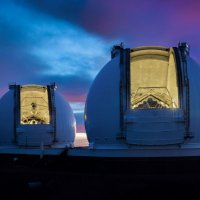
ET-Lab
@etlab_caltech
We are Exoplanet Technology Laboratory at Caltech. Our goal is to develop innovative technologies for studying planets around other stars (i.e. exoplanets)!!
ID: 1329874296076857344
http://etlab.caltech.edu/ 20-11-2020 19:48:52
17 Tweet
24 Followers
4 Following

Happy to share Rodrigo Ferrer's first paper🎉: the biases in orbit fitting due to short orbital arcs💫(arxiv.org/abs/2103.12877 w/ Sarah Blunt, PhD 🍉 ). Quite an impressive piece of work considering most of this was done last summer over his remote summer internship. Some highlights...

I am excited to share that I will be working with Jason Wang, Jerry Xuan, and Dr. Dimitri Mawet on exoplanet imaging at the ET Lab as a SURF Fellow this summer!🔭😁Looking forward to the journey ahead!



Lots of people want to write astronomy software, but it's hard to get started. I have collated some of my thoughts about how to start building astronomy software here. christinahedges.github.io/astronomy_work… I include recommended tools, git tutorials, and demos of how to start projects. 1/2

What a week this was! A lot of credit to Sarah Blunt, PhD 🍉 for shaping this workshop! I loved all the enthusiasm from participants to improve astro software! That really made my week





Astronomers have for the very first time measured how fast HR 8799 exoplanets are spinning. The result marks first science for our new instrument KPIC. Congrats to Jason Wang of Caltech, Jacques Delorme of W. M. Keck Observatory & their teams! Details 👉 keckobservatory.org/kpic

Our former intern and current collaborator Aniket Sanghi has won a prestigious scholarship! Congratulations, Aniket!!




